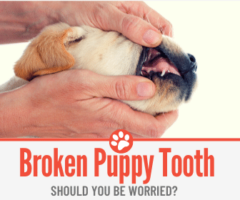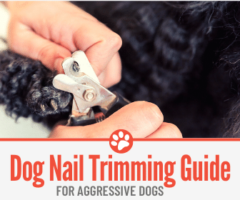 Have you noticed a swelling or lump on the ear of your dog? You might be looking at something called a hematoma, also called an aural hematoma.
Have you noticed a swelling or lump on the ear of your dog? You might be looking at something called a hematoma, also called an aural hematoma.
A dog ear hematoma is a blood blister that forms on the inside of the ear flap, caused when a blood vessel bursts.
Simple actions, like head shaking or ear scratching can cause hematoma in dogs when they already have an underlying issue, like an ear infection or skin problems, but usually they form after a knock or injury.
Hematomas can occur in all types of dogs, but those with droopy ears are more likely to suffer from them.
What to do If Dog Ear Hematoma already Popped?
In case your Dog has scratched an already developed Hematoma and popped it, it should be cleaned thoroughly with hydrogen peroxide or alcohol using a sterile cloth/ cotton wool – afterwards it can be wrapped with gauze or even a plaster to avoid infections. It’s very unlikely that a hematoma would pop on its own however.
It is tempting to try to treat a hematoma yourself, but that is not advised. If you aren’t sure whether your dog’s ear flap is swollen because of a hematoma or something else, read common symptoms below for a better diagnosis.
Is it dangerous If Dog’s Ear Hematoma Popped?
In simple terms, Hematoma is an accumulated sack of fluid, In extremely rare chance that it might pop on it’s own there is no real danger to your dog provided that the wound is thoroughly cleaned to avoid infection. Once the Hematoma ”pops” the accumulated blood would come out draining itself, this should be cleaned and discarded.
You should however call vet if there are any obvious signs of infections starting to appear after it has popped which can be extremely dangerous if left untreated.
What causes hematoma on dogs’ ears?
If a blood vessel in the dog’s ear bursts a hematoma can develop. As the vessel bleeds, the dog’s ear may swell like a balloon, become heavy, warm and uncomfortable.
In treating the hematoma, it is important to understand the root cause. Burst blood vessels can be caused by a variety of factors, such as:
-
A knock or bump to the head/ear
-
Mites
-
Skin infection or irritation
-
Ear infection
Symptoms of a dog ear hematoma
Depending on the severity of the hematoma, your dog may or may not be acting differently to its usual self. Look out for the following symptoms to assess whether your pooch is suffering from dog ear hematoma:
-
A red, swollen ear flap that will be hot to the touch
-
The ear flap will be droopy or hang down at a slightly strange angle
-
Scratching of the ear
-
Tilting of the head
-
Head shaking
Treatment of dog ear hematoma
Dog hematoma treatment very much depends on the size and cause of the swelling. There are a few cases which warrant leaving the hematoma to heal on its own, but in any case, it is not a good idea to treat it yourself. Your vet can advise on the best course of action.
As well as resolving the hematoma itself, vets can address the underlying causes and prescribe to treat mites, or the irritated skin, for example, reducing the likelihood of future issues reoccurring.
If the hematoma is too large and complex to leave alone, the following options will be discussed:
-
Draining
This is usually done using a syringe and needle, although in some cases an indwelling plastic drain is necessary. If the swelling refills, next steps will be surgery. In some cases, a drain with negative pressure is set up to constantly suck out any liquid. This helps also bring the separated layers together again. This technique is less invasive than full surgery and does not require a general anaesthetic. It is also fairly straightforward to perform.
-
Surgery
Surgery involves making a slit in the ear flap to drain it before compressing it with stitches so it can’t refill. General anaesthetic is needed, the procedure is more painful and the post-op recovery time is obviously a little longer. It is the best route for achieving a flat flap again though.
-
Medication
Dog ear hematoma can be treated with anti-inflammatory medication. This reduces the swelling and eases the pain. If the underlying cause of the hematoma requires additional medication, the vet will prescribe that too.
If draining or surgery are the chosen route, your vet will supply a head cone to stop your pet from rubbing against the ear or causing further infection or damage to the area. The hematoma wound may continue to leak blood for a little while after treatment. If that worsens or lasts for longer than a couple of days you should contact your vet again.
Massaging the dog’s ear helps the ear get back to normal quickly and is something the owner can easily do at home.
Less traditional methods of treatment for Dog hematoma
There are also alternative methods for treating dog ear hematoma. The following are probably not going to be prescribed by your vet, but that doesn’t mean you might not want to consider them:
-
Holistic medicines
Homeopathic remedies, such as hypernicum and arnica, can be effective on smaller hematomas – those that take up one-fourth or less of the ear. But as time progresses, and the hematoma begins to clot and harden, homeopathy can be less effective.
-
Inclusion of steroids
Because eosinophils (a type of white blood cell) and mast cell infiltrations have been found in hematomas some experts speculate that hematoma blood blisters may partly be due to an allergic reaction. Little data has been found to support this theory, but in some cases prescribing steroids alongside the other treatments can help reduce inflammation and resolve the hematoma.
-
Leeches
These wriggling black worms have been used for centuries to remove excess bloods. Because they inject numbing chemicals into the skin when they bite, no additional pain relief is needed with their use. Treatment can be slow – it might take up to a month for the swelling to properly subside – but the ear’s appearance is usually back to normal afterwards.
Is a dog ear hematoma painful
Yes, your dog’s ear will hurt and throb; particularly, if it has been caused by a bump, knock or scratching. Pain will reduce after a couple of days, but of course will return if draining or surgery are performed to treat the hematoma.
Can a dog ear hematoma heal on its own
In some cases dog ear hematoma can be left to heal on its own. The body reabsorbs the fluid and blood and the swelling subsides. In more serious cases, the ear does not revert back to its previous appearance. Also, as the cause of the hematoma can often be due to other issues, such as mites, skin or ear infections or skin irritations, it is not a good idea to ignore it. The problem is unlikely to go away.
What happens if a dog ear hematoma is left untreated
The severity of the hematoma very much decides whether leaving it untreated will cause a problem or not. The challenge with hematomas is in reattaching the skin to the ear cartilage, which separates when the flap swells with blood.
The best course of action is to get guidance from a vet. Leaving complex hematomas untreated can cause scarring, leaving a thickened, crinkly ear flap – like a rugby player with ‘cauliflower ear’. This is unsightly and can in some cases be very uncomfortable for the animal.
When to call a vet?
In all circumstances it is best to get a vet to check your dog’s ear over. Primarily to accurately diagnose that it is a hematoma, but also to establish the reason for its appearance, as well as helping with treatment.
Can a dog ear hematoma burst on its own
No, dog ear hematomas will not burst of their own accord. If untreated they can scar, but smaller ones may disappear as the body reabsorbs the blood, leaving the ear as it was before. The only way for it to ”burst” is if your dog pierces it by scratching it.
How to do hematoma treatment / remedy at home
So, how do you drain a dog’s ear hematoma? If you feel you must carry out a hematoma drain at home yourself, get hold of a sterilised, surgical needle and syringe. Pierce the swelling and drain the fluid. Wash well with hydrogen peroxide , alcohol or salty water a couple of times a day until the wound has healed.
How long does it take for a dog ear hematoma to go away
Without treatment, hematomas can continue for quite a while (up to a month). Once treatment has been administered (particularly draining or surgery) the ear should heal within one to two weeks.
Related Questions
I’m unsure why my dog’s ear flap is swollen
The main causes for a swollen ear are that your dog has a hematoma. If your furry friend is holding its head at an angle, is scratching or shaking its head a lot and the ear feels squishy and is swollen, it is likely to be a hematoma.
How much does dog ear hematoma surgery cost?
If your dog requires surgery or having its ear drained, the costs can quickly stack up. Dog ear hematoma surgery /draining costs can be between $100-$500 , more if it has become infected and need additional medicine/ further treatment.
What are common ear infections in dogs?
Up to about 20 percent of dogs have some sort of ear disease. The shape of their ear and ear canal make them much more susceptible to infections than humans. The best course of action is to prevent infection in the first place, rather than treating the problem after it has arisen. In all cases, speak to your vet for further advice and how best to resolve the issue.
As you get to know your pet you will pick up on the telltale signs of when he/she is not feeling great. Your dog might start whining a lot, tilt or shake its head frequently, scratch and rub that side of the head on things and generally seem out of sorts.
Some diseases are visible, dog ear hematoma, for example. Other illnesses cannot be so easily diagnosed by a layperson.
Infections are categorised into one of three variants: otitis externa, media, and interna.
Otitis externa infections affect the outer section of the ear canal and although they are the most common, they are also the least serious. Otitis media and interna infections typically develop from external infections moving inwards. These can become very concerning, leading to deafness, facial paralysis and vestibular signs. That’s why it’s important to prevent infections and seek early treatment when problems arise.
What causes ear infections in dogs?
The canine ear canal is more vertical than that of a human. This L-shape means that fluids don’t escape, which in turn makes dogs more prone to ear infections. Fluids can build up and act as a breeding ground for bacteria, yeast, or a combination of both, and infections will develop. Ear mites can also be a source of infection, particularly in puppies.
Factors that exacerbate the chances of an infection developing are:
-
Moisture, which creates optimal growing conditions for bacteria and yeast
-
Allergies, which lead to ear disease in about 50 percent of dogs with allergic skin diseases and 80 percent of dogs with food sensitivities
-
Endocrine disorders, for example thyroid disease
-
Autoimmune disorders
-
Wax buildup
-
Foreign bodies
-
Injury to the ear canal
-
Excessive cleaning
Can apple cider vinegar cure ear infections in dogs?
Apple cider vinegar can help treat mild infections, but will not address the root cause of the infection. It is, therefore, a good home remedy to use if you can’t yet get to a vet, but if the problem persists or the infection is at all concerningly severe, speak to a veterinary specialist.
Dilute some apple cider vinegar in water and spray onto the infected area. The acidic nature of the vinegar gives it some mild antiseptic and anti-inflammatory properties, which help alleviate the pain and discomfort your dog is experiencing.
Home remedies to treat dog ear infections
Another natural remedy you might want to consider is witch hazel. It soothes inflammation and helps clean the area, particularly useful with puppies.
Mullein oil, if combined with oil of garlic, can be applied to the sensitive area for up to 10 days, five or six drops at a time. Mullein oil attacks viruses, eases pain and reduces swelling.
Massaging the infected area with equal parts pau d’arco and mineral oil a couple of times per day for several days is another option. Pau d’arco is an herbal antibiotic that kills fungi and bacteria. Be careful with massaging the ear though, as your dog might be in pain and so you need to adjust your pressure accordingly.
You can also apply a warm compress to the ear several times a day; this will reduce pain and inflammation.
Ensure your dog has a healthy diet and sufficient vitamin C. This will help its natural defenses to fight off any infections. Vitamin C not only boosts the immune system, but it also increases the adrenal glands’ secretion, to help fight ear infections.
Do cats get hematomas?
Although it is much less common in cats, our feline friends are also susceptible to ear hematomas. Causes are similar to in dogs: a knock or bump to the ear, infections or skin irritation. Treatment should be carried out as soon as possible to avoid permanent disfigurement. The options are also draining, surgery and medication. In some cases the pinna (flap of the ear) is stabilized with sutures to prevent further damage.






